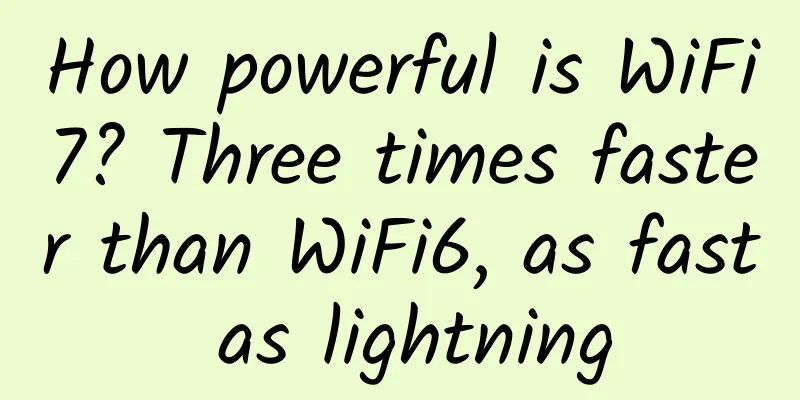5G is coming, which of the three major CDN forces will take the initiative in the future market

|
Judging from the scene of MWC2018, 5G has become the hottest keyword in the next mobile Internet. The entire time period for operators to officially commercialize 5G will be around 2019~2020. With the upcoming arrival of 5G, the explosion of smart devices and traffic demand will put higher requirements on the entire CDN network, and also provide CDN service providers with a huge profit space. Content will become the most important role in the current and future Internet. Live broadcast, on-demand, and video media content will account for 80~90% of the entire Internet traffic. The explosion of massive traffic and computing resources, the next wave of video traffic consumption, has given new value and capabilities to edge computing and edge networks. Today's CDN is being divided into three major forces: traditional CDN, cloud CDN, and operator CDN. How these three forces will seize the opportunity of the next-generation CDN and who will stand out at the crossroads of the next era and gain more market share are topics of concern in the current CDN industry. Nearly 50 cities piloted 5G in 2019, and CDN providers are gradually laying out the 5G ecosystem The 5G trend is just around the corner, and various operators have announced their 5G commercialization timetables. At CES earlier this year and MWC not long ago, operators in North America, Europe, and Asia (mainly in China) have stated that their 5G commercial networks have been put on the agenda, which will bring huge opportunities to the entire Internet industry. According to the plan of the Ministry of Industry and Information Technology, the three major domestic operators are expected to achieve large-scale commercial use of the fifth-generation communication technology in 2020. Data shows that since 2013, China has taken the lead in launching 5G trials and R&D processes. At present, my country's 5G commercialization process is progressing in an orderly manner, and technical R&D tests have officially entered the third stage this year. The three major operators have started 5G field tests one after another, and pilot construction is being accelerated. China Telecom: On October 27 last year, China Telecom's first 5G pilot base station was opened in Shenzhen. The pilot area is centered on the Shenzhen Software Industry Base, covering the Double Innovation Park, Science and Technology Ecological Park, Shenzhen University Campus, and the incubation bases of the University of Hong Kong and the Hong Kong Polytechnic University in Shenzhen, gathering a large number of high-tech companies. In other cities, China Telecom opened a 5G base station in Suzhou on November 10, and officially opened 5G pilot base stations in Shanghai on November 11, Chengdu on December 1, and Lanzhou on December 2. China Unicom: China Unicom plans to conduct 5G trials in seven cities, including Beijing, Tianjin, Shanghai, Shenzhen, Hangzhou, Nanjing, and Xiong'an. According to the plan, China is expected to achieve pre-commercial use of 5G communications in 2019, and it is expected to achieve large-scale commercial use of 5G communications by 2020. China Mobile: China Mobile recently announced that it will join forces with seven partners to build the world's largest 5G test network under the guidance of the government, and officially announced the 2018 5G large-scale experiment plan - field tests will be carried out in five cities, namely Hangzhou, Shanghai, Guangzhou, Suzhou, Jiangsu, and Wuhan. More than 100 5G base stations will be built in each city; 5G business and application demonstrations will also be carried out in 12 cities including Beijing, Chengdu, and Shenzhen, Guangdong. Overseas, T-Mobile, Vodafone, AT&T, and Verizon have all stated that they will conduct pilot projects in nearly 50 cities in 2019, and then further realize 5G commercialization in 2020. The 5G era originated from operators, but it also affected the changes in the entire Internet ecosystem. CDN service providers and video solution providers have also seen the opportunities of 5G. Broadpeak, a world-renowned video service provider and CDN service provider, announced at the recent MWC that it has joined the standard-setting work for two 5G networks and intends to integrate its video streaming solutions and CDN solutions into the 5G standards. Jacques Le Mancq, CEO of Broadpeak, said, “5G networks are the future for mobile operators and global content delivery. By taking a leading role in defining 5G standards, Broadpeak continues to focus on providing customers with a premium end-user experience and delivering the highest scalability, bandwidth efficiency and quality across every screen. Consumers can enjoy the highest quality experience, whether on the go, at home, using an eMBMS device or a regular smartphone.” 5G triggers the next generation CDN revolution, and traditional CDN, cloud, and operators seize the opportunity With the advent of the 5G era, CDN will also face the next generation of changes. Historically, CDN has faced two generations of changes. The first generation of CDN was launched at the end of the last century, focusing on the distribution and transmission of static and dynamic content. The principle of the first generation of CDN is to create and replicate content through intelligent routing or edge servers with hardware servers as the center. Akamai, Wangsu Technology, and ChinaCache are the symbols of the first generation of CDN era. This is the most obvious CDN dividend and the most glorious era for traditional CDN. The second generation CDN mainly focuses on video (large traffic) applications, that is, transmitting video or audio content between users and servers to solve distribution and application problems. Youtube and Netflix are typical representatives of the demand for CDN in this era. The second generation CDN also provides a path to provide content to mobile users. On the technical level, cloud computing and virtualization help to shift from high-end hardware to more cost-effective. At the same time, the CDN of this era has a highly flexible and feature-rich CDN deployment model. In addition to Akamai, cloud players such as Amazon, Google, CloudFlare, and MaxCDN have also entered the CDN market. In China, traditional CDN giants are also impacted by companies such as Alibaba Cloud and Tencent Cloud. On the other hand, major operators such as Verizon are also paying attention to the growth of the CDN market due to their advantages such as major network capacity and the last mile for end users. The CDN market is mainly divided into three major forces: traditional CDN, cloud CDN, and operator CDN. So what will the next generation of CDNs look like when 5G arrives? Performance and intelligent scheduling (and therefore more cost-effectiveness) on the public Internet will be the goal of the next generation of CDNs. For example, when watching IPTV today, although the picture quality can reach HD levels, we still often encounter delays and buffering, depending on factors such as network conditions, peak times, or WiFi strength. The next generation of CDNs should become smart and powerful enough to stabilize this situation and optimize the customer experience. This is not just what caching can satisfy, customer self-management and quality of experience are expected to be the focus of the new CDN dividend. Future CDN services will follow their basic principles, namely, approaching end users through traffic cost optimization and strong security. Therefore, traditional CDN providers such as Akamai and Wangsu Technology should still be able to play their role well because they have front-end servers deployed on a large scale in various places; core cloud service providers can benefit from the availability of a massive range of cloud services and data centers; and telecom operators will also perform well in the 5G environment based on their understanding of network lines and control or traffic operations of the last mile of access. On the other hand, although wireless signal towers undoubtedly provide very close access points for end users, the low throughput of wireless networks used to be a bottleneck for content delivery, but now everything has changed. 5G mobile solutions supported by fiber-intensive backhaul and backbone networks will become the "dark horse" of next-generation CDN solutions, and their bandwidth capacity is expected to reach gigabits per second (reference today's 4G LTE can only handle download speeds between 5 and 12 Mbps and upload speeds between 2 and 5 Mbps). Last September, in cooperation with Nokia, Ericsson and Samsung, T-Mobile was able to demonstrate a speed of 12 gigabits per second in its 5G network test, which is three times faster than the trial conducted by Verizon in February 2016. This will make high-quality, large-size and real-time content delivery via wireless access an amazing reality. SD-WAN is rapidly developing and being deployed around the world to optimize public Internet performance and serve as a replacement for traditional MPLS networks. From a CDN perspective, SD-WAN will enable better service management and customer experience for static and dynamic content, front-end optimization, responsive server-side, adaptive image compression, load balancing, content protection, source management, and application customization. It also includes security, such as anti-DDOS attacks. With the high intelligence, scalability and cost-effectiveness of the SD-WAN platform and the last-mile throughput of the overflowing 5G wireless solution, the combination may generate a brand new SD-5G hybrid WAN for the next-generation CDN and disrupt some existing service models. China Unicom shares its CDN deployment strategy: Cloud+Edge+Cloud to build a distribution network Perhaps on the ITU-T website, China Unicom’s latest CDN architecture can be foreseen. With the needs of 5G development, future operators’ CDNs will integrate resources for cloud, edge computing, and fog computing. Large-scale traffic explosions and increased video demand, as well as smart terminal devices and ubiquitous network demands will put higher demands on traditional CDNs. It can be found that with the explosive growth of ultra-high-definition video, the business based on the layout of large video services has become a consensus. Global operators, whether it is IPTV, OTTTV, online video services, short videos, or network services with high bandwidth, low latency, and high reliability requirements, will have a significant demand for the next-generation CDN network. According to the statistics of Cisco Visual Network Index, by 2021, the global monthly data traffic will reach 49EB, of which video traffic will account for 80% of the total traffic. The demand for high-resolution video services is growing rapidly, and the bandwidth demand is increasing. Video, games, social networking, 4K, 8K, VR and AR will flourish in the 5G environment. In the face of the explosive traffic and terminal distribution characteristics of 5G, the development characteristics of the next-generation CDN can be summarized into four points:
The new CDN network architecture should cover the cloud, edge, and fog, with three features: 1. First, establish a cloud-based CDN network , responsible for control, management and storage; establish a resource balance mechanism and allocation principle; unify and open. On the one hand, enhance the control and extension capabilities of the network, and on the other hand, enhance the virtual resource pool of storage and carrying capacity, provide PB-level computing power, quickly respond to Internet services, provide high-quality routing for multiple tenants, and avoid overheating bottlenecks. Establish load balancing, dynamic resource balancing, and have perception and accurate fault control. Save operating costs through management optimization, promotion settings, and function management. CDN intelligent scheduling based on SDN network: Establish a load-based scheduling mechanism, a CDN intelligent scheduling strategy based on user experience and network resource allocation, configure network resources according to business requirements, use SDN controller to count network traffic in real time + control the forwarding of user traffic + maximize the use of network resources. 2. Establish edge CDN in fixed network and mobile environment: In the fixed network environment, CDN nodes are deployed to BNG or OLT network equipment; in the mobile network, CDN nodes are deployed to UTN equipment or basic equipment. CDN converges at the edge of the fixed and mobile networks, and the CDN architecture converges to the edge of the network, realizing fixed and mobile converged deployment at the converged network layer. 1) Reduce operating costs: Convenient third-party application integration; effective use of operators' unique capabilities and resources; easy to open resources to CP/SP 2) Improve network quality Save traffic flow paths and shorten latency; easily achieve converged network load and core networks 3) Establish edge virtual nodes: Edge node virtualization management: one-stop resource control, one-time integration, and achieve local and remote deployment effects. CDN functions must be sufficient to meet the requirements of flexible expansion: providing differentiated/fast/accurate service responses based on the business needs of enterprise users. 3. Fog computing, which directly penetrates CDN into user homes; home smart terminals, home gateways, and set-top boxes; P2P-based fog computing nodes. Thousands of home fog nodes are closer to users than the cloud. P2P technology is applied to CDN nodes, which greatly relieves network pressure and provides idle upstream, bandwidth, and fog resources. Create new business revenue. Based on the construction requirements of operators' CDN, it is not difficult to summarize the characteristics of the next-generation CDN:
|
<<: How to Understand and Evaluate Potential Colocation Data Center Providers?
>>: Teach you how to distinguish between single-mode and multi-mode optical fibers
Recommend
Start your digital transformation journey
[[402875]] Railways are the backbone of sustainab...
How to connect multiple Ethernet switches?
Ethernet is not a new technology as it has been u...
Why You Should Avoid Public WiFi
Translator | Li Rui Proofread by Sun Shujuan Ther...
5G keeps refreshing the timetable and the three major operators have finalized the roadmap!
5G has been constantly updating its timetable rec...
7 ways artificial intelligence is impacting enterprise IT infrastructure
Artificial intelligence (AI) technology has gaine...
Chinese companies are strong in 5G R&D, spectrum strategy planning needs to be implemented
In recent times, 5G has become popular in the cir...
The road is wide and the traffic is fast! The three major operators help IPTV to have a new spring
Since last year, IPTV has enjoyed a resurgence. T...
100M broadband, Gigabit routing and Gigabit ports, revealing the "pitfalls" of broadband and routers
100M broadband is not necessarily fast! When it c...
Meet challenges and continue to innovate: Cisco Meraki opens a new hybrid office model
In the post-epidemic era, hybrid office has becom...
Huawei OpenLab: An indispensable open cooperation platform for building an IT ecosystem
Normally, the labs we are talking about are labs ...
Super detailed explanation of Socket communication principles and examples
We are well aware of the value of information exc...
5G cannot enhance industry?
There are already more than 1,100 “5G+Industrial ...
US reportedly allows chip sales to Huawei but only for non-5G business
Things have been bad for Huawei since the US ban....
Operators' user development under severe cold weather, some are happy while others are sad
It is time for operators to release their monthly...
How to build a universal smart IoT gateway by reducing the data sampling rate
【51CTO.com Quick Translation】Although there are m...









